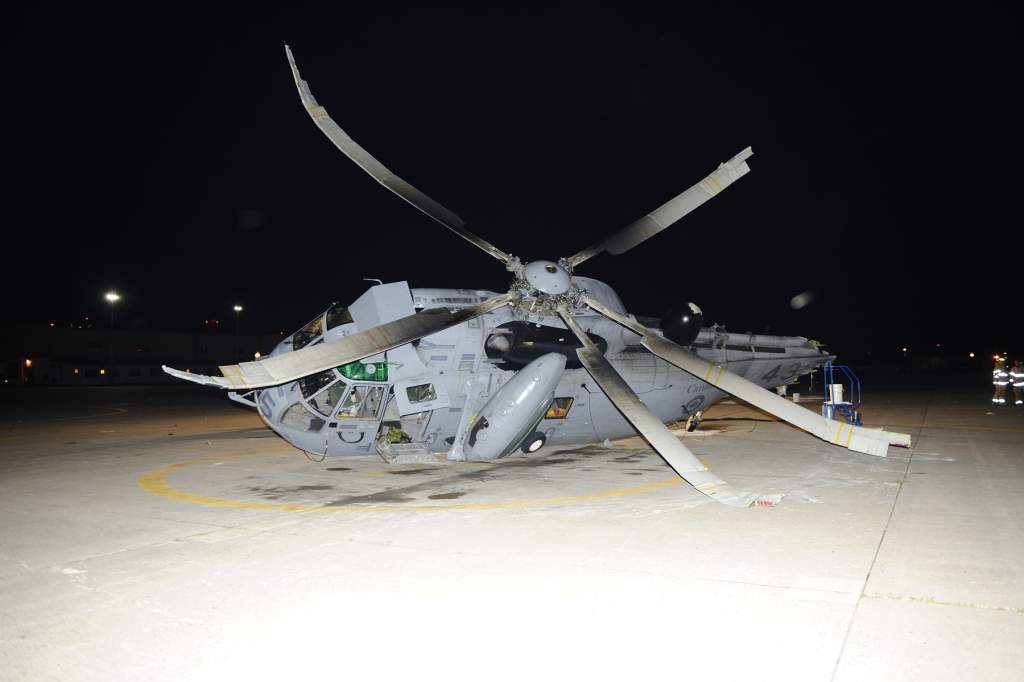CH12435 Sea King - Epilogue
Report / July 16, 2013 / Project number: CH12435-B-Cat
Location: 12 Wing Shearwater, Nova Scotia
Date: 15 July 2013
Status: Investigation Complete
The crew planned a night trainer in the local Shearwater area and boarded the aircraft during a hot refuel with engines running and rotors turning. The aircraft had ground taxied to take off from Helipad 3 when it was recalled back to the inner ramp so that the aircraft captain could sign additional electronic aircraft records prior to the flight. After the aircraft came to a complete stop, the aircraft captain started removing his safety harness. The co-pilot then transferred control of the collective lever to the aircraft captain and, at the same time, was motioning to the marshaller. The aircraft then pitched forward rapidly.
As the aircraft’s tail rose, the aircraft rotated forward and pivoted on the extended main landing gear oleos before lifting off the ground. The main rotor disk then tilted rearward and impacted the tail pylon, causing it to separate from the fuselage. Once the aircraft fell back to the ground and started yawing right, it then rolled left as the left sponson collapsed and the main rotor blades struck the ground at the pilots’ 11 o’clock position. The aircraft yawed 120 degrees to the right before coming to rest on its left side, after which the crew conducted an emergency shutdown and egressed through the personnel door. There were no injuries or post-accident fire though flying debris damaged the surrounding hangars.
Post-accident maintenance inspections revealed no technical faults. The investigation focussed on flight control systems, aircrew actions and related human factors. The investigation explored the conditions creating incipient longitudinal pitchover, specifically the combination of a forward tip path plane, locked wheels, and collective movement. The transfer of control procedure was also investigated. The investigation concluded that CH12435 had an upload force set in the collective, causing the collective to rise easily, quickly and significantly if unguarded and/or jarred. The pilot employed a commonly accepted yet undocumented procedure for partial transfer of the collective control and released the collective without getting acknowledgement from the other pilot. Once the aircraft started to pitch forward, the pilots were unable to recognize and react in a timely manner to prevent the accident due to reduced visual cues.
Preventive measures include the establishment of Sea King maintenance procedures to set a neutral collective upload, clear direction on partial transfer of control, and measures to address the latent conditions that contributed to the accident.

